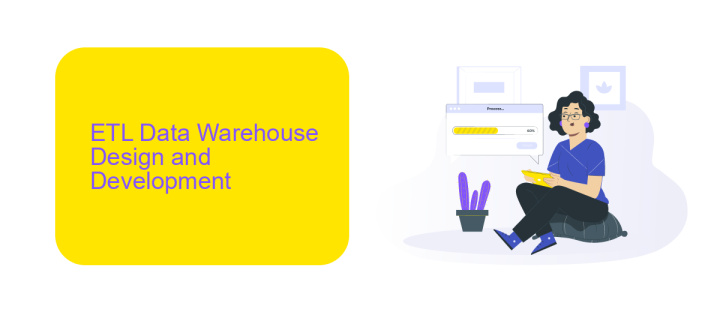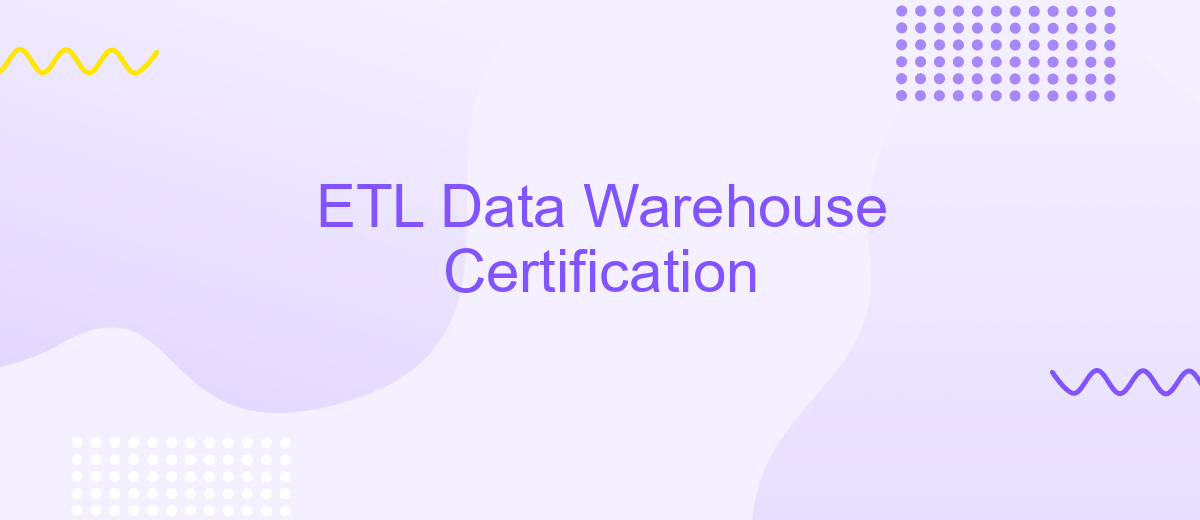ETL Data Warehouse Certification
Earning an ETL Data Warehouse Certification can significantly boost your career in data management and analytics. This certification validates your expertise in extracting, transforming, and loading data into data warehouses, ensuring data integrity and accessibility. Whether you're a data engineer, analyst, or IT professional, this credential can open doors to advanced opportunities and demonstrate your commitment to excellence in the field.
ETL Data Warehouse Architectures
ETL (Extract, Transform, Load) data warehouse architectures are crucial for managing and processing large volumes of data efficiently. These architectures facilitate the extraction of data from varied sources, its transformation to meet analytical requirements, and its loading into a data warehouse for storage and analysis.
- Extract: This phase involves retrieving data from multiple heterogeneous sources such as databases, APIs, and flat files.
- Transform: During this phase, the extracted data is cleaned, filtered, and transformed into a suitable format for analysis.
- Load: The final step is loading the transformed data into a data warehouse where it can be easily accessed and analyzed.
Using services like ApiX-Drive can streamline the integration process by automating data extraction from various APIs, ensuring seamless and consistent data flow. This reduces the manual effort required and minimizes the risk of errors, ultimately enhancing the efficiency and reliability of your ETL processes.
ETL Data Warehouse Design and Development

Designing and developing an ETL data warehouse involves meticulous planning and execution to ensure data integrity, scalability, and performance. The process begins with understanding the business requirements and data sources, followed by designing a robust architecture that can handle data extraction, transformation, and loading efficiently. Key components include data staging areas, data integration layers, and data presentation layers. Each component must be optimized to handle large volumes of data and complex transformations while maintaining data quality and consistency.
One of the critical aspects of ETL data warehouse development is setting up seamless integrations between various data sources and the data warehouse. Tools like ApiX-Drive can simplify this process by offering pre-built connectors and automated workflows, reducing the need for manual coding and minimizing errors. ApiX-Drive supports a wide range of data sources and destinations, making it easier to integrate disparate systems and ensure that data flows smoothly into the data warehouse. This not only accelerates the development process but also enhances the reliability and scalability of the ETL pipeline.
ETL Data Warehouse Implementation

Implementing an ETL Data Warehouse involves several critical steps to ensure data is accurately extracted, transformed, and loaded. The process begins with identifying the data sources which may include databases, flat files, and APIs. It's essential to understand the structure and format of the data to be extracted.
- Data Extraction: Identify and connect to data sources, ensuring secure and efficient retrieval of data.
- Data Transformation: Cleanse, normalize, and aggregate data to match the data warehouse schema.
- Data Loading: Load the transformed data into the data warehouse, ensuring data integrity and performance optimization.
To streamline the integration process, tools like ApiX-Drive can be invaluable. ApiX-Drive offers seamless integration capabilities, allowing for automated data extraction from various sources and simplifying the transformation and loading processes. By leveraging such tools, organizations can reduce manual efforts and ensure consistent data quality, leading to more reliable business intelligence and analytics.
ETL Data Warehouse Testing and Deployment

ETL Data Warehouse testing and deployment are critical phases in ensuring the reliability and efficiency of data processing systems. Testing involves validating the ETL processes to ensure data accuracy, integrity, and consistency. This phase includes unit testing, integration testing, and system testing to identify and resolve any issues before moving to production.
Deployment, on the other hand, is the process of moving the tested ETL processes and data warehouse structures to the production environment. This step requires careful planning and coordination to minimize downtime and ensure a smooth transition.
- Unit Testing: Validates individual components of the ETL process.
- Integration Testing: Ensures different components work together seamlessly.
- System Testing: Validates the entire ETL process in a production-like environment.
- Performance Testing: Assesses the ETL system's performance under various conditions.
Tools like ApiX-Drive can facilitate the integration and automation of ETL processes, making deployment more efficient. By automating data flows and integrations, ApiX-Drive helps ensure that data is consistently and accurately transferred between systems, reducing the risk of errors and improving overall system reliability.


ETL Data Warehouse Maintenance and Support
Maintaining and supporting an ETL Data Warehouse is crucial for ensuring seamless data operations and optimal performance. Regular monitoring of ETL processes is essential to identify and resolve bottlenecks or failures promptly. This involves checking data loads, ensuring data integrity, and verifying that transformations are executed correctly. Implementing automated alerts and logging mechanisms can significantly enhance the efficiency of these monitoring activities, enabling quick response to any issues that arise.
Additionally, integration services like ApiX-Drive can simplify the maintenance process by automating data transfers between various systems. ApiX-Drive allows for easy setup of data pipelines, reducing the need for manual intervention and minimizing the risk of errors. Regular updates and patches to the ETL tools and data warehouse systems are also necessary to maintain security and performance. Comprehensive documentation and training for support teams ensure that any issues can be addressed swiftly, maintaining the data warehouse's reliability and efficiency over time.
FAQ
What is ETL in the context of Data Warehousing?
What are the prerequisites for obtaining an ETL Data Warehouse Certification?
How long does it typically take to complete an ETL Data Warehouse Certification?
What are the benefits of automating ETL processes?
Can I use ETL tools without coding knowledge?
Apix-Drive is a universal tool that will quickly streamline any workflow, freeing you from routine and possible financial losses. Try ApiX-Drive in action and see how useful it is for you personally. In the meantime, when you are setting up connections between systems, think about where you are investing your free time, because now you will have much more of it.

